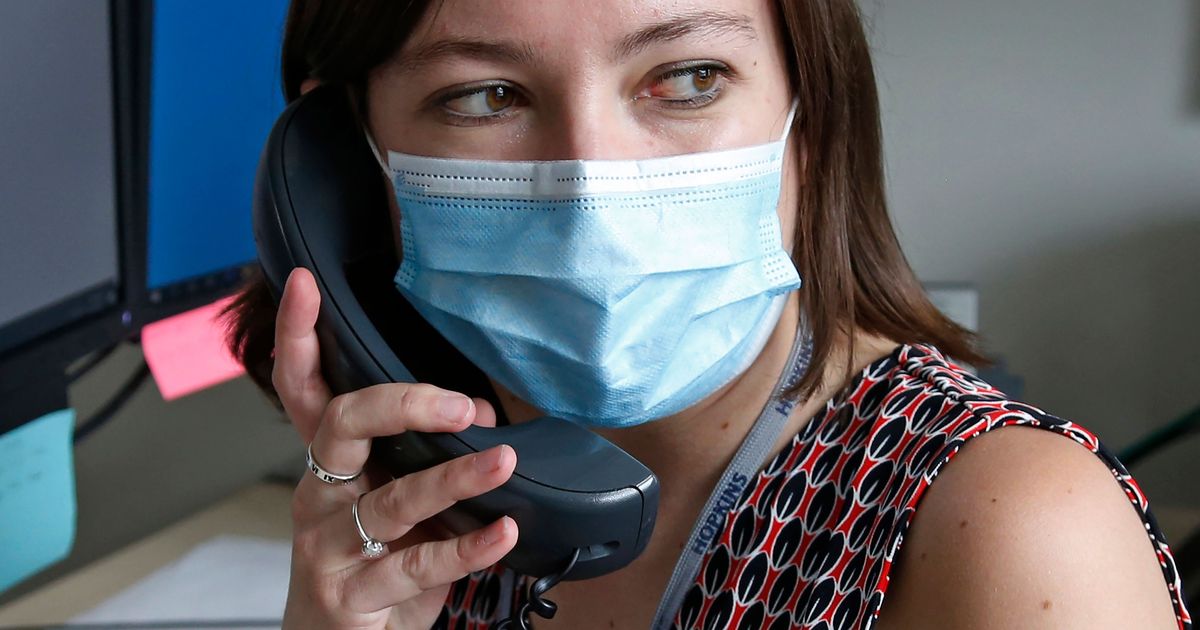
The epicenter of the American coronavirus outbreak, New York City, is gearing up to launch a massive contact tracing operation in order to safely begin reopening the economy and, well, life.
Contact tracing is when health officials get in touch with the people whom a person who has tested positive for coronavirus has come in contact with. They then check if they are symptomatic, and often request that they self-quarantine. It’s a leading method for preventing outbreaks.
We now have more information about how, in a city of 8.5 million, it will all technically work.
NYC has tapped a tech company called Twilio for the job. Twilio is a “cloud communications” company, which means it provides all sorts of digital communication tools behind the scenes — like marketing text messages, customer service chats and calls, and status updates — to other companies. You know when you get those texts about when your Uber driver is arriving? That’s powered by Twilio.
The city plans to use Twilio’s customizable “flex” program for its cloud-based contact center, which basically means it’ll use Twilio’s servers and software to keep track of individuals and power its communications efforts. When the city’s contact tracers get in touch with someone, they’ll be doing it through Twilio’s text and voice platforms.
Contact tracers will send out educational information and requests for people to self-report on their symptoms and contacts. The program, and partnership with Twilio, runs through the city’s Department of Information Technology & Telecommunications (DoITT). Twilio couldn’t speak to how NYC specifically would use the platform, but provided a framework for what their contact tracing operation looks like. Here’s their step by step explanation (edited for length and clarity by Mashable).
-
Twilio’s cloud contact center gets integrated with a database of patient data.
-
A contact tracer will click into a patient’s record in their database to automatically trigger a call to connect them to a COVID-19 infected patient (through Twilio).
-
The contact tracer will educate the patient about COVID-19 and ask them who they’ve been in contact with recently who may have been exposed to the virus. Scripts vary based on the type of patient.
-
Then, the contact tracer places additional phone calls to all exposed individuals letting them know what precautions they should take now. Contact tracers do not reveal the identity of the patient who exposed these contacts.
-
Once contact tracers have called patients and notified contacts, they then put the individuals in an automated set of text messages for 14 days. Patients and contacts get daily reminders via text to click through to a symptom survey where they report on how they are doing.
With so much sensitive health information passing through Twilio, privacy is certainly something to pay attention to. Twilio says that it is a “non-location based, HIPAA compliant contact tracing solution.” It also clarified that “the government agencies deploying contact tracing solutions control the collection and storage of data,” not Twilio.
Earlier in May, the city and states of New York announced that they would hire “thousands” of contact tracers. Contact tracers can be people with healthcare experience, but the government is also accepting applications from people who take an online course and pass with an 85 percent or above. The Guardian reports that the course had over 150,000 enrollments in its first week, and that NYC has already had 10,000 people apply for the job.
Twilio runs the communications of some of the most prominent tech companies in the biz, including both Uber and Lyft, Airbnb, Instacart, Netflix and too many other household names to list. Since getting a functional contact tracing operation up and running in New York City is going to be a tremendous challenge, it’s encouraging that the city has tapped such a major player. Now, it’ll be up to New Yorkers to actually answer the phone.
